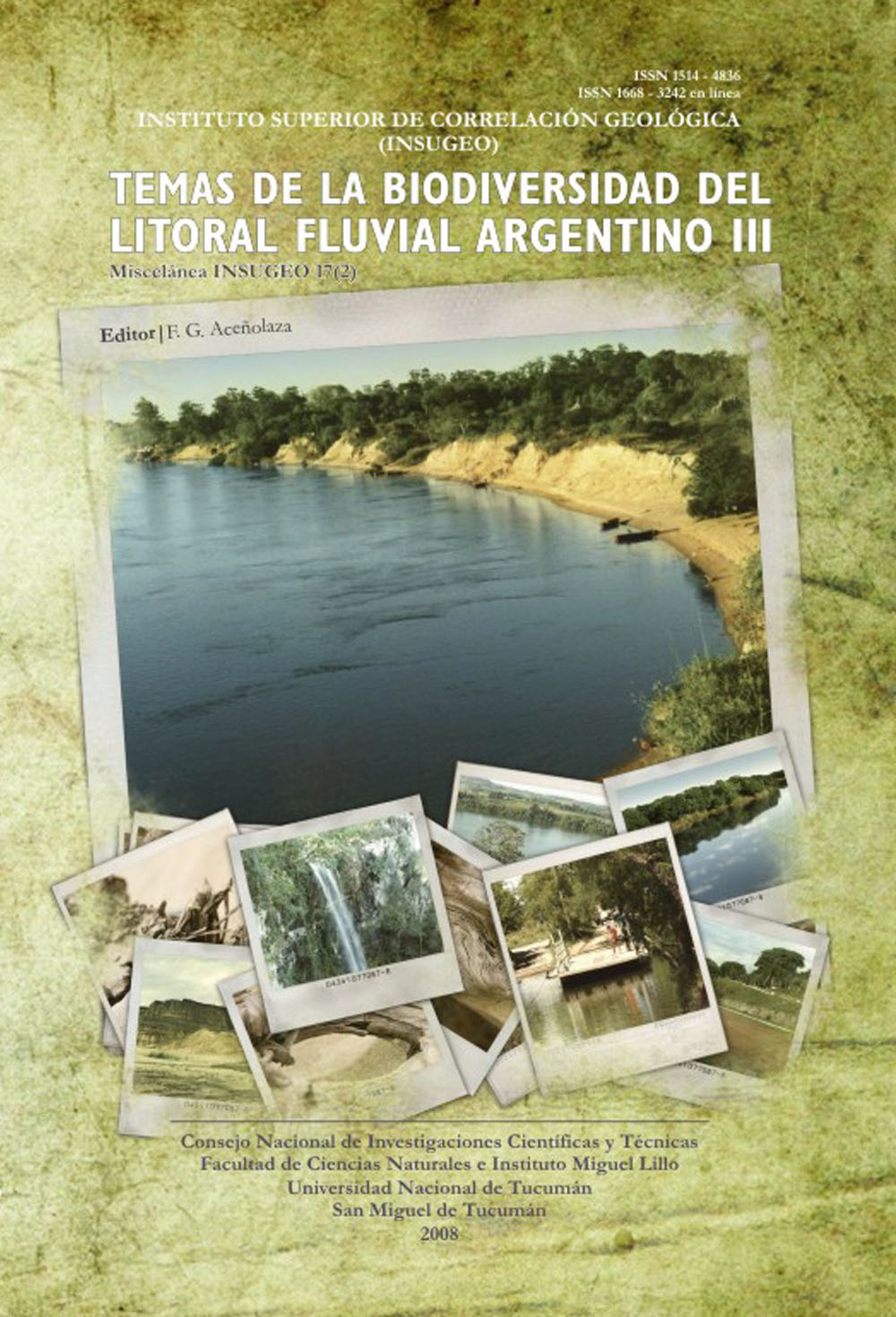Miscelánea 17 (2)
Variación primavero-estival de la diversidad y abundancia de la comunidad de aves en la Reserva Ecológica de la Ciudad Universitaria U.N.L. “El Pozo”
Gustavo Cardozo | Adolfo H. Beltzer | Pablo A. Collins
Descargar trabajo en formato PDFResumen
VARIACIÓN PRIMAVERO-ESTIVAL DE LA DIVERSIDAD DE Y ABUNDANCIA DE LA COMUNIDAD DE AVES EN LA RESERVA ECOLÓGICA DE LA CIUDAD UNIVERSITARIA U.N.L. “EL POZO”.- Se analiza la composición y estructura de una comunidad de aves localizada, en la localidad de Santa Fe en la reserva ecológica de la ciudad universitaria “El Pozo” (31° 38’ S - 60° 40’ W), durante el ciclo primavero-estival 2002- 2003. Los conteos de las aves fueron realizados mediante la técnica de recorrido fijo. Se registraron un total de 1088 individuos, correspondientes a 75 especies y 24 familias. Las más representativas fueron: Tyrannidae, Emberezidae, Icteridae, Cuculidae y Furnariidae. Se tuvieron evidencias que la diversidad y abundancia de aves fluctuaron como consecuencia de perturbaciones antròpicas. Dentro del ciclo se reconocieron cambios sensibles dentro de los valores de diversidad, dominancia y riqueza de especies. La diversidad (D), calculada con el índice de Simpson, osciló entre 0,956 y 0,911, en tanto que la dominancia (d) entre 0,0718 y 0,3414. El valor más alto de diversidad se registró en el mes de diciembre y el más bajo de dominancia en octubre. Se identificaron 15 gremios tróficos durante el estudio. El gremio Insectívoro frugívoro por espigueo fue el que presentó mayor riqueza (22,66% del total de especies registradas) La unidad ambiental monte blanco presentó la mayor riqueza (60 especies). Esta puede estar influida por el porcentaje de cobertura pero además por la complejidad estructural del ambiente. Las 75 especies ordenadas por grupos de abundancia, presentan en función del índice de Gower similitud general. Se concluye que la reserva universitaria es una área que merece ser preservada ya que provee un lugar idóneo para el conocimiento de la naturaleza tanto desde el punto de vista recreativo, educativo como también para el ejercicio de la investigación científica.
Abstract
SPRING-SUMMER VARIATION OF DIVERSITY AND ABUNDANCE IF THE BIRD COMMUNITY IN THE ECOLOGICAL RESERVE OF UNIVERSITY CITY U.N.L. «EL POZO».- We analyze the composition and structure of a birds community in the ecological reserve of the university town «El Pozo» located at Santa Fe (31°38' S - 60°40' W), during the spring -summer cycle 2002 to 2003. The bird counts were performed using the technique of fixed route. There were a total of 1088 individuals, corresponding to 75 species and 24 families. The most representative were Tyrannidae, Emberezidae, Icteridae, Cuculidae and Furnariidae. We had evidence that the diversity and abundance of birds vary as result of the anthropic disruptions. In the sample period, sensitive changes were observed in the values of biological diversity, species richness and dominance. The diversity (D), calculated with the index Simpson, ranged between 0956 and 0911, while the dominance (d) between 0.0718 and 0.3414. The highest value of diversity was recorded in the month of December and the lowest value of dominance occurred in October. We identified 15 trophic guilds during the study. The glening insectivorous-frugivorous birds guild was the one who introduced greater specific rich (22.66% of the total number of recorded species), the environmental unit named as White Mount presented the greatest specific rich (60 species). This could be influenced by the percentage of coverage, but also by the structural complexity of the environment. The 75 species ordered by abundance groups presented general similarity according to the analysis of the index of similarity Gower. It is concluded that the reserve is an area university that deserves to be preserved because it provides an ideal place for the knowledge of nature from the point of view recreational, educational and also for the exercise of scientific research.






